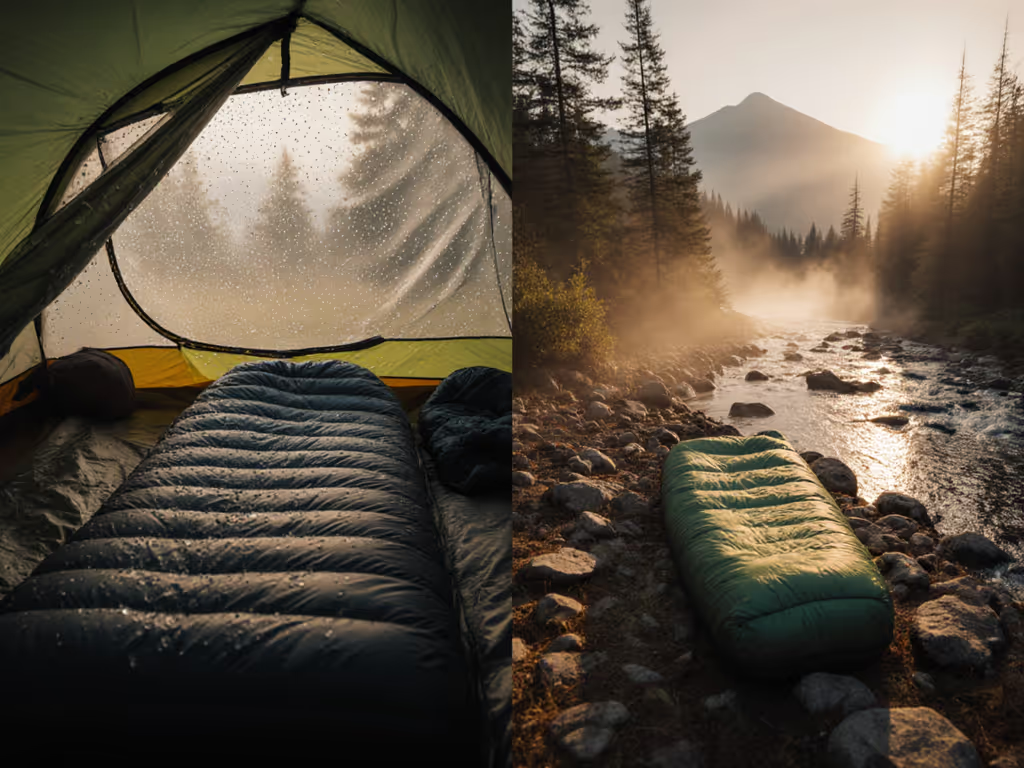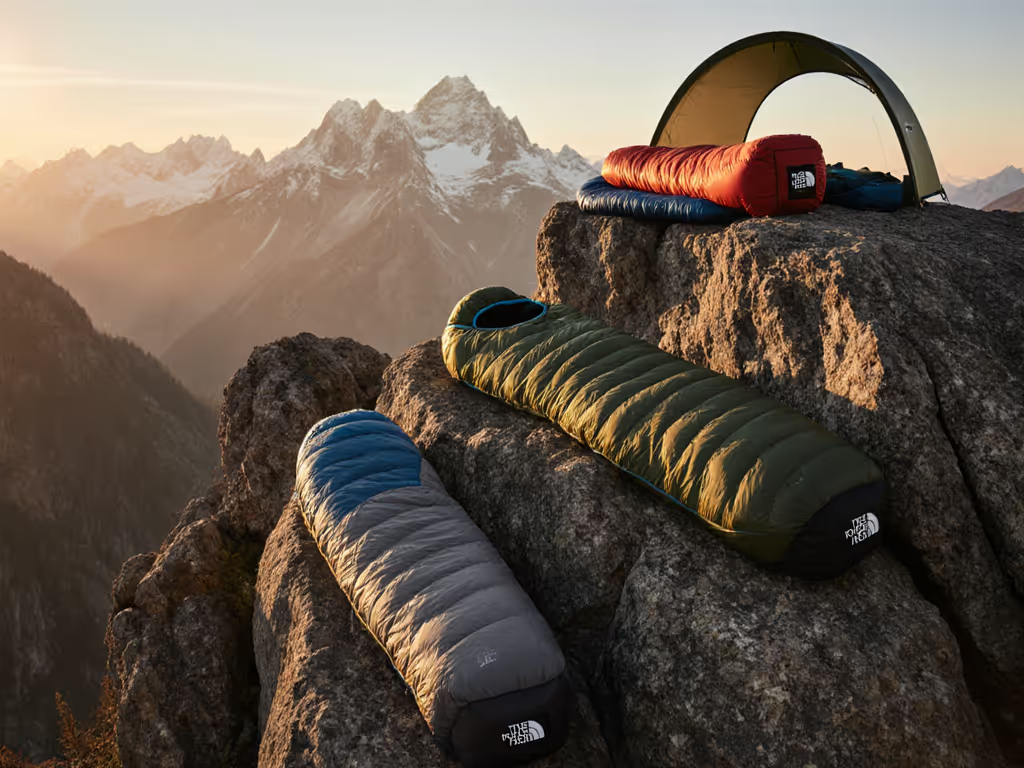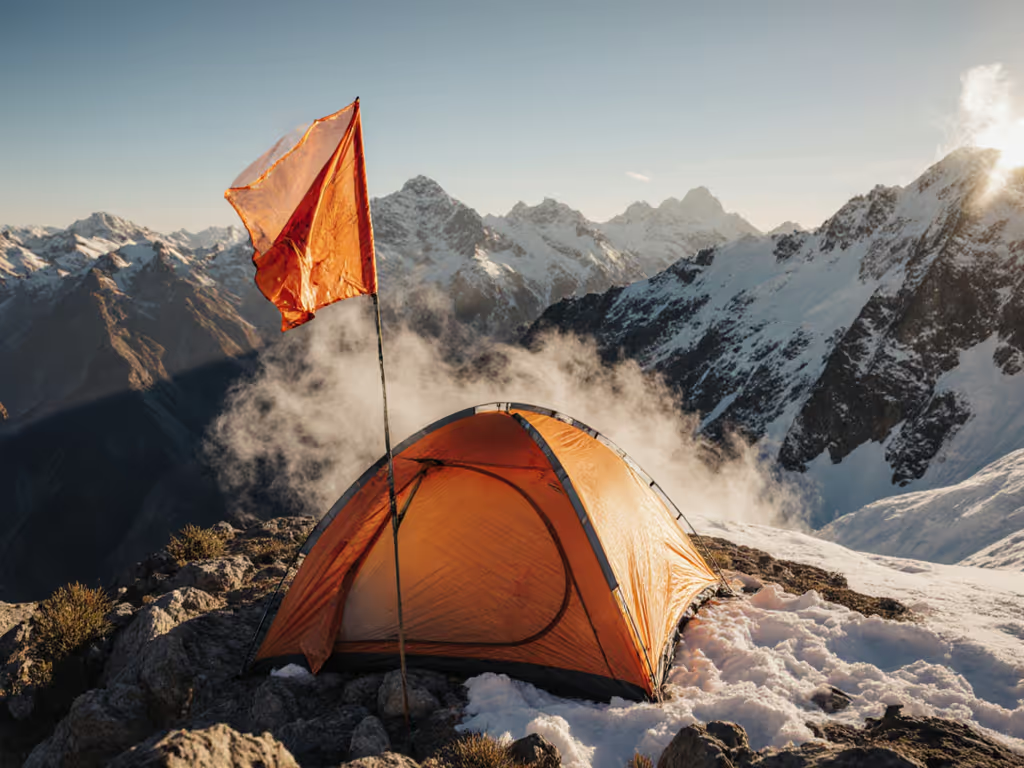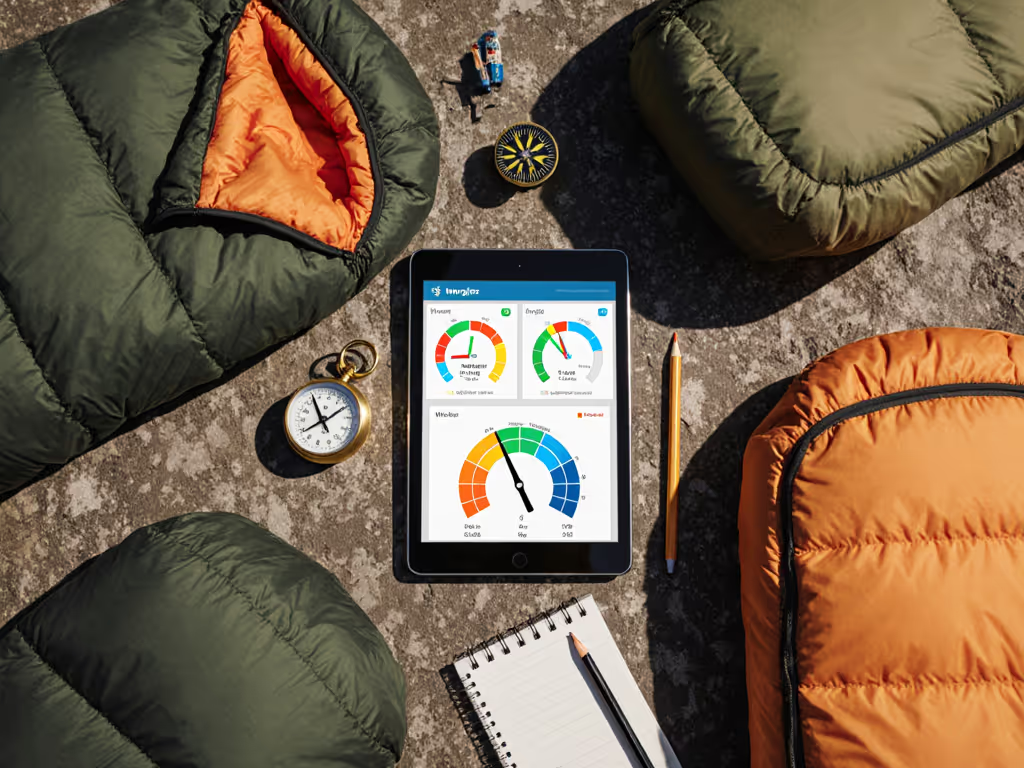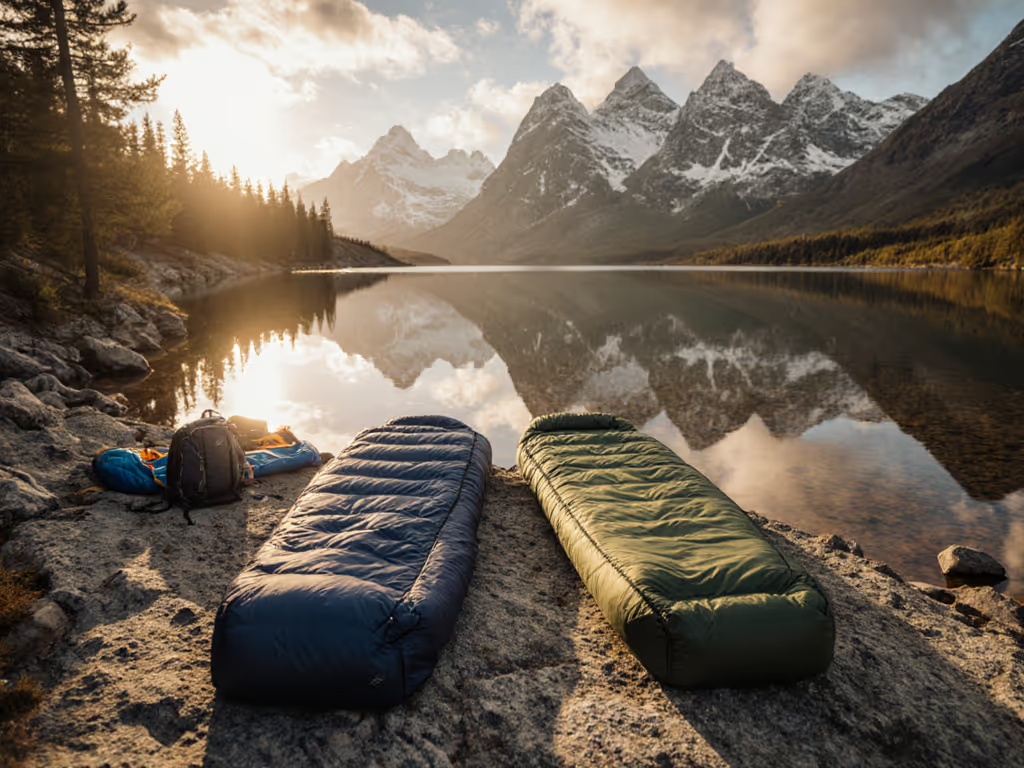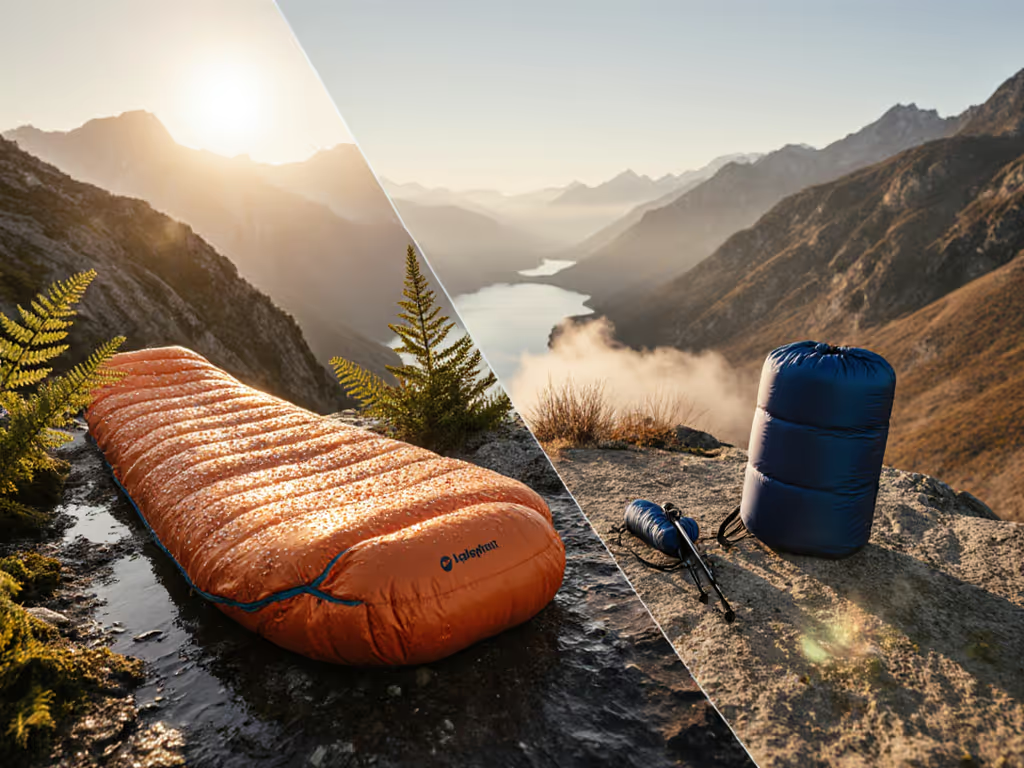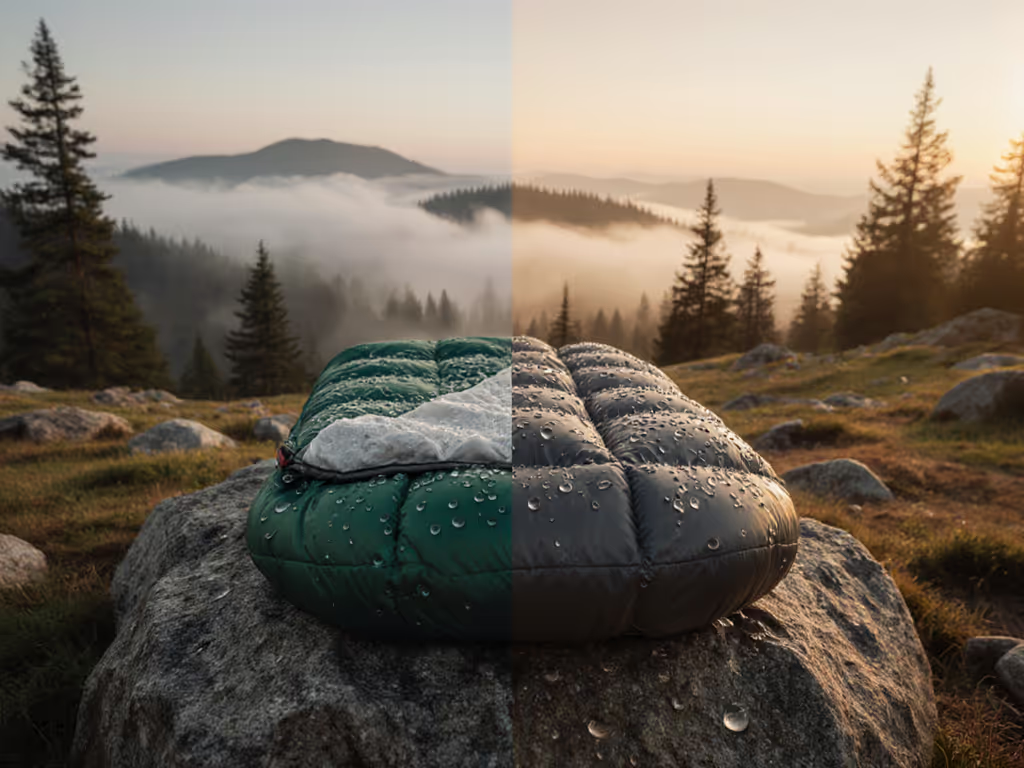When hunting for the best sleeping bags, most hikers fixate on temperature ratings alone, which is why even top sleeping bags fail them in real conditions. Warmth isn't bought in a single-spec promise; it is earned by the system: bag, pad, shelter, wind management, and fuel. After optimizing sleep for 150+ alpine bivies, I've seen hikers shiver inside "20°F" bags while others sleep soundly at 10°F with smarter integration. This isn't about brand loyalty; it's about matching your actual conditions to what REI, Nemo, and The North Face actually excel at. Let's cut through the marketing noise with pad-first logic and wind-adjusted scenarios.
Why Your Sleeping Bag Rating is Lying to You (And What to Do)
Temperature ratings assume perfect lab conditions: no wind, a standard pad (R-value 5.0), and a sleeping bag worn loose without compression. For a deeper dive into EN/ISO assumptions and real-world performance, see our sleeping bag temperature ratings guide. Real-world variables shred those assumptions. That REI Co-op Magma 15's ISO comfort rating of 21°F? Meaningless if you're using an R-value 2.5 pad in gusty conditions. My own shoulder-season epiphany came during a windy Mount Washington bivy; my '20°F' bag felt sub-zero until I mapped wind speed to R-value adjustments and calorie burn.
The Pad-First Reality Check
Your sleeping pad isn't just cushioning; it's your primary warmth source. Below 50°F, 80% of conductive heat loss flows through your backside. Yet most hikers prioritize bag weight over pad R-value. This table shows how real-world conditions (using ISO 23599 standards) destroy rating reliability:
| Bag ISO Comfort Rating | Base Pad R-Value | Effective Temp (Calm) | Effective Temp (20mph Wind) |
|---|
| 32°F | R 2.5 | 37°F | 22°F |
| 20°F | R 4.0 | 24°F | 9°F |
| 15°F | R 5.3 | 18°F | 2°F |
Wind reduces effective temperature by 10-15°F at 20mph, and increases calorie burn by 200-300 kcal/hr, depleting your thermal buffer.
Warmth is a system, not a single-spec promise.
Wind Exposure: Your Silent Sleep Killer
Wind exposure isn't just about chill; it is about moisture and metabolic cost. A steady 15mph breeze wicks sweat through fabrics, chilling you twice: first via evaporation, then via damp insulation. Steep terrain or open ridges compound this. Use this wind-adjustment checklist before pitching:
- <10mph: Standard R-value pad + quilt or semi-rectangular bag
- 10–20mph: Add 1.5 R-value to pad + mummy hood + draft tube check
- >20mph: Minimum R 5.0 pad + fully enclosed mummy + vapor barrier liner (VBL) on feet
I've watched hikers sleep comfortably at 18°F in a 30°F-rated bag because they paired it with an R 5.5 pad and positioned their tent behind a rock wall; others froze at 30°F with the same gear in exposed sites. The system is the spec.
REI Co-op: Best for Down Efficiency & Cold-Sleepers (When Wind is Controlled)
REI dominates when you prioritize warmth-to-weight ratio in low-wind environments. Their Magma series (using 850-fill power hydrophobic down) leverages pad synergy better than any major brand. While their online specs list ISO comfort ratings, they transparently show how their "tested" ratings outperform EN standards, which is critical for cold sleepers who push bag limits.
REI's Strengths in System Integration
- Pad-first engineering: Magma bags include a "R-value compatibility chart" showing how their bags perform with specific pads (e.g., Magma 15 + Trailbreak 4.5 = reliable to 12°F)
- Women's-specific fit: Cold sleepers need more insulation in the footbox and torso; REI's women's models add 15% fill in these zones without bloating weight
- Shelter-aware draft management: Their hood cinches seal against single-wall tents better than competitors' designs
When to Skip REI's Bags
- High-wind alpine zones (their draft collars thin out below 20°F bags)
- Coastal humidity (even hydrophobic down loses loft faster than Nemo's synthetics when damp)
- Plus-size bodies needing side-sleep room (their unisex cuts run narrow)
Nemo Equipment: The Eco-Friendly Synthetic Powerhouse for Wet/Windy Zones
Nemo's Forte line (particularly their Endless Promise models) solves two overlooked problems: moisture retention in humid climates and wind-driven chill. While REI optimizes for dry cold, Nemo engineers for real-world wetness, and their new mono-material construction makes them among the most credible eco-friendly sleeping bag companies today.
Why Synthetics Win in Shoulder Seasons
Synthetic insulation maintains 90%+ loft when damp, a fact confirmed by Utah State University's 2024 moisture retention study. In coastal redwood forests or September Rockies storms, that Zerofiber PCR insulation in the Forte 20 outperforms down even at 5°F above its rating. Key advantages:
- Ventilation zippers: Chest vents let you dump heat without losing core warmth (critical for fitful sleepers)
- Spoon shape: Elbow/knee room prevents compression cold spots during side-sleeping
- Wind resistance: Their 30D shell fabric blocks 30% more wind penetration than standard 20D ripstop
The Sustainable Trade-Off
Yes, synthetics weigh 20-30% more than down equivalents. But for hikers who've woken shivering in a soaked down bag, that weight buys reliability. The Forte's recyclability (via Nemo's Take-Back Program) proves sustainability needn't compromise performance, if you're honest about your conditions.
Nemo's Ideal User
- High-humidity zones (Pacific Northwest, Appalachian Trail)
- Windy shoulder seasons (where gusts exceed 15mph 40%+ of nights)
- Vegan campers or eco-prioritizers (without sacrificing warmth)
The North Face: Car Camping Comfort Kings (But Alpine Weaknesses)
TNF's Wawona Bed series excels where REI and Nemo don't: unrestricted comfort for non-weight-sensitive trips. Their 30°F Wawona Bed 20 packs down slower but gives you room to shift positions without compressing insulation, a godsend for side sleepers. Yet TNF's alpine applications reveal critical gaps.
Where TNF Shines
- Couples/family setups: The Wawona Double syncs two sleepers' temperatures without dead air zones
- Humidity control: Better breathability than REI's down bags in muggy desert nights
- Budget accessibility: $50-100 cheaper than REI's equivalent down bags
Critical Alpine Shortfalls
- No R-value integration: Their specs ignore pad synergy, overstating comfort ratings
- Draft tubes vanish below 25°F: Cold spots develop at shoulders/feet in 20°F bags
- Heavy shell fabrics: 50D material traps moisture more than Nemo's 30D weave
TNF is your best bet for backyard camping or developed sites, but pair it with a thick pad (R 5.0+) if you take it above treeline.
Your Actionable System Prescription (Not Just Bag Recommendations)
Forget "best sleeping bags" lists. Build your prescription using these three steps:
1. Calculate Your Required R-Value First
Start with expected low temp + wind exposure:
- Base R-value = (Comfort rating you want) - (Bag's ISO comfort rating) + 2.5
- Add 1.0 R-value for every 10mph of expected wind
- Example: Target 28°F comfort in 15mph wind with a 20°F bag = (28-20)+2.5 + 1.5 = R 5.0 minimum
2. Match Bag Type to Microclimate
| Condition | Best Bag Type | Why | Sample Product |
|---|
| Dry alpine, calm | Down mummy (REI) | Maximizes warmth/weight | REI Magma 15 |
| Windy/humid | Synthetic spoon (Nemo) | Blocks wind, resists moisture | Nemo Forte 20 |
| Car camping | Semi-rect (TNF) | Room to move without cold spots | TNF Wawona Bed 20 |
3. Add Wind-Adjusted Safety Margins
- Calm nights: Bag rating = expected low
- Windy nights: Bag rating = expected low + 10°F
- High humidity: Add vapor barrier liner (adds 5-8°F)
Here's the system I'd actually take for a Colorado 14er summit bid in June:
- Bag: Nemo Forte 20 (handles overnight rain/snow)
- Pad: Therm-a-Rest NeoAir XTherm (R 5.3)
- Wind gear: Tyvek groundsheet + bivy sack as windbreak
- Calorie buffer: 500kcal high-fat snack before bed
This costs $50 more than REI's equivalent down setup but prevents the 2AM shivers that ruin summit attempts. Because in the alpine, warmth isn't something you buy; it's something you build.
Your Next Step: Audit Your Last Failed Night
Grab your journal. Find the coldest night where your system failed. Now answer:
- What was your pad's real R-value? (Not the marketing claim)
- Did you eat enough pre-sleep calories? (80% of cold sleepers skip this)
Plug those into the R-value calculator above. If your pad was under 4.0 in windy conditions? That's why you froze, not the bag. Stop shopping for "best sleeping bags" and start engineering your warmth. Your next summit night depends on it.
